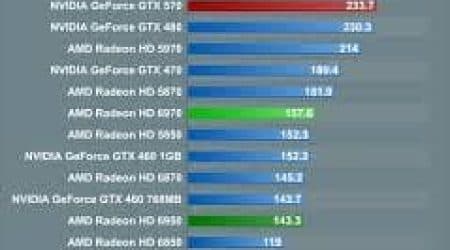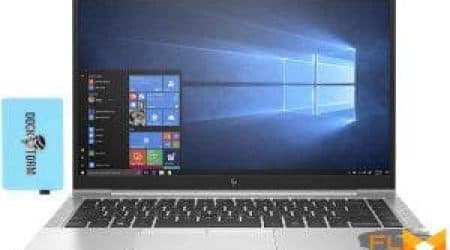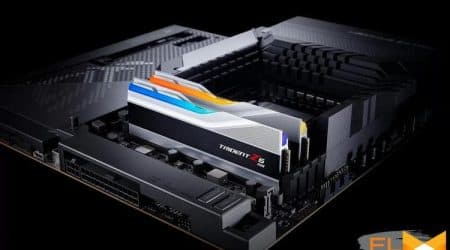In an age where high-speed connectivity plays a vital role in our daily lives, consumers are constantly evaluating options to remain connected. Emerging technologies offer innovative solutions that promise reliable access, especially in remote areas. However, the intricacies of these offerings often lead to confusion about their overall value.
When considering a satellite-based connectivity option, it’s essential to delve into various factors that influence pricing. Monthly fees, equipment expenses, and potential hidden charges can all contribute to the final financial commitment. This exploration highlights not only the apparent expenses but also the broader implications of such choices on customer experience.
By examining available data and user feedback, prospective users can better navigate the landscape of satellite connectivity. Understanding what one could expect in terms of performance, benefits, and limitations can reshape perceptions and inform decisions effectively.
Understanding Starlink’s Pricing Structure
Exploring the financial framework of satellite connectivity can reveal various components that contribute to overall expenses. This examination indicates that costs are not solely based on subscription fees, but also include equipment charges, installation requirements, and potential additional expenses. A comprehensive view allows potential users to assess what they would be investing for access and ongoing connection.
Typically, initial investments cover both hardware, such as satellite dishes and routers, alongside necessary installation services. Recurring monthly payments may vary based on region and desired speed, reflecting market conditions and demand. Furthermore, occasional promotions or bundled packages can present alternative pricing strategies worth considering.
Seasoned consumers may also find optional add-ons or enhancements beneficial, though these can impact total expenditure significantly. Understanding all these facets enables individuals to make informed decisions about subscriptions and identify the pricing structure that best aligns with their needs.
Installation Fees and Equipment Costs
Understanding the financial aspects related to setup and necessary devices is crucial for evaluating the overall investment in this connectivity solution. Initial expenditures can significantly impact budget considerations, making it essential to analyze the components involved.
Typically, there are several key elements that contribute to the initial financial outlay:
- Installation Fees: These charges may vary depending on location and specific requirements for installation.
- Equipment Costs: Users need to purchase specific hardware to access the network effectively.
Below is a breakdown of typical expenses:
- Equipment Purchase: This generally includes a satellite dish, router, and any necessary cables. Expect to pay a one-time fee for this hardware.
- Installation Options: Customers may have the choice between self-installation or professional setup. Opting for expert assistance often incurs additional charges.
- Replacement or Upgrade Fees: Should any equipment require replacement or be upgraded in the future, costs can be associated with those changes as well.
Being well-informed about these financial responsibilities can aid in making sound decisions regarding this connectivity option. Careful consideration of both installation and equipment charges is integral to comprehensive planning.
Monthly Subscription Expenses Explained
Every user looking into a connectivity solution should evaluate their ongoing financial commitments. This section delves into regular payments associated with the access plan, providing valuable insights for potential subscribers.
Basic Monthly Charges
The primary expense incurred monthly involves the fee for accessing the service. This amount can vary based on several factors:
- Geographical region of the user
- Chosen plan type
- Promotions or offers that may be available
Additional Fees to Consider
In addition to the standard monthly fee, there are several other costs that subscribers may encounter:
- Equipment Rental or Purchase: Users may need to invest in specific hardware or incur rental fees for necessary equipment.
- Installation Charges: Some plans may require a professional setup, leading to an extra expense.
- Taxes and Regulatory Fees: These can apply depending on local laws and regulations, impacting the overall monthly expenditure.
Understanding these financial components aids in forming a clearer picture of the total expense involved in maintaining access to this communication solution.
Comparative Analysis with Other ISPs
In this section, we will examine various aspects of service offerings provided by different providers, highlighting similarities and differences that may influence consumer choices. Understanding these elements can empower users to make informed decisions based on their individual needs and requirements.
Key factors to consider when comparing offerings include:
- Pricing structures
- Data limits and speeds
- Contract terms and flexibility
- Customer support and satisfaction ratings
- Installation fees and equipment costs
When evaluating traditional broadband providers:
- Pricing Structures: Typically offer a range of packages, often with promotional rates that increase after an initial period.
- Data Limits: May impose strict data caps, affecting users who consume large amounts of content or engage in heavy browsing.
- Installation Fees: Often require one-time charges for setup, which varies between service providers.
In contrast, satellite solutions present a different set of advantages and disadvantages:
- Coverage: Generally available in rural or underserved areas where traditional broadband is limited or absent.
- Speeds: Can be notably slower due to latency, especially in comparison to fiber or cable options.
- Contract Flexibility: May offer month-to-month plans, allowing users to explore options without long-term commitments.
Ultimately, it is crucial for consumers to assess their specific requirements and preferences in order to select a suitable provider that aligns with their digital lifestyle.
Hidden Costs of Starlink Service
While many individuals are drawn to the allure of high-speed satellite connectivity, there are several less obvious expenses that can significantly impact overall affordability. Understanding these factors is essential for anyone considering this option, as they can affect budget planning and accessibility.
Additional Fees and Charges
Beyond the standard monthly subscription, users may encounter various fees that contribute to the overall expense of maintaining the service. It is important to account for these charges when evaluating viability.
| Fee Type | Description |
|---|---|
| Equipment Cost | One-time payment for satellite dish and modem |
| Installation Fees | Possible charges for professional setup |
| Service Adjustments | Fees for changing service plans or features |
| Add-on Services | Extra charges for additional data or priority support |
Variable Performance Factors
Performance quality can fluctuate significantly based on environmental conditions and geographical location. Users may need to invest in enhancement tools or additional equipment to optimize their experience, which adds to the expense.
Impact of Speed and Coverage on Value
In evaluating connectivity options, factors like performance and geographical reach significantly influence overall worth. These two elements greatly determine user experience and satisfaction, guiding potential subscribers in their decision-making process.
A high-speed connection facilitates smoother browsing, faster downloads, and enhanced streaming capabilities, making it an attractive option for households reliant on online activities. In contrast, limited bandwidth may hinder usability, leading to frustration among users and potentially diminishing perceived value.
Coverage plays an essential role as well. Accessibility in various regions ensures that even those in remote areas can enjoy reliable connectivity. A service that combines both robust speed and extensive coverage provides users with a comprehensive solution, ultimately enhancing its desirability and encouraging long-term commitment.
Q&A: How much does starlink cost
How does Starlink satellite internet service compare to traditional satellite internet providers?
Starlink satellite internet service, provided by Elon Musk’s SpaceX, offers higher download speeds and lower latency compared to traditional satellite internet providers. Starlink uses a satellite constellation that provides high-speed internet access to rural areas, where traditional satellite services often suffer from slower speeds and high latency. With Starlink, customers can expect faster speeds, especially in regions with limited internet options, making it a game-changer for rural internet users.
What are the typical download speeds and costs associated with Starlink satellite internet?
Starlink satellite internet typically offers download speeds between 50 Mbps and 150 Mbps, with some users experiencing faster speeds depending on their location and network load. The standard Starlink internet plan costs around $120 per month, with an upfront cost for the Starlink kit, which includes a dish, router, and other necessary equipment. This price is higher than some traditional internet services but offers reliable internet access in areas where other options may be limited or unavailable.
What is the benefit of using Starlink for internet access in rural areas?
The main benefit of using Starlink for internet access in rural areas is the availability of high-speed internet where traditional internet service providers may not offer coverage. Starlink provides internet speeds much faster than other satellite internet providers and has a low-latency connection, making it ideal for activities like video streaming, online gaming, and working from home. For rural areas with limited internet options, Starlink offers a reliable alternative to slow or unreliable connections.
How does the Starlink app help manage your satellite internet service?
The Starlink app is designed to help users manage their satellite internet service by providing easy access to network status, speed tests, and device management. Users can also set up and activate their Starlink kit via the app, ensuring a smooth installation process. The app allows Starlink customers to monitor their internet connection in real-time and troubleshoot any issues that may arise, making it an essential tool for maintaining reliable internet access through Starlink’s satellite service.
How does Starlink, Elon Musk’s satellite internet service, compare to cable internet for home internet?
Starlink, Elon Musk’s satellite internet service, offers high-speed internet to areas where cable internet may not be available, especially in rural or remote regions. While cable internet typically provides more consistent speeds in urban areas, Starlink’s satellite internet constellation is designed to deliver competitive download speeds with much lower latency than traditional satellite providers. Starlink’s home internet plans, including the standard $120 per month option, make it a reliable alternative for areas lacking cable internet infrastructure.
What are the benefits of Starlink Roam for mobile internet users?
Starlink Roam offers mobile internet users the flexibility to access high-speed internet while traveling, making it ideal for RV users or those who need internet on the go. The Roam plan allows users to connect via the Starlink satellite network in different locations without being tied to a specific address. This plan is part of Starlink’s efforts to provide mobile priority and seamless internet coverage, particularly for those in remote or rural areas where mobile internet options are limited.
What are the key differences between the Starlink Standard and Business plans?
The Starlink Standard plan is designed for typical home internet users, offering high-speed, low-latency internet service for $120 per month. In contrast, the Starlink Business plan is tailored for enterprises that require more bandwidth and higher priority access to the Starlink network. Starlink Business offers faster speeds, dedicated priority during peak times, and additional support options. Both plans come with a Starlink dish, but the business plan includes more robust hardware designed to handle higher traffic loads.
Why might users choose Starlink over other satellite providers?
Users may choose Starlink over other satellite providers due to its low-latency internet, competitive download speeds, and broader coverage in rural areas. Starlink’s satellite internet constellation, combined with Elon Musk’s goal of providing modern internet to underserved areas, makes it a strong option for those who need reliable internet access in regions where traditional providers like cable or fixed wireless internet may not be available. Starlink also offers flexible plans and pricing, like the Roam plan, making it appealing for both home and mobile internet users.




